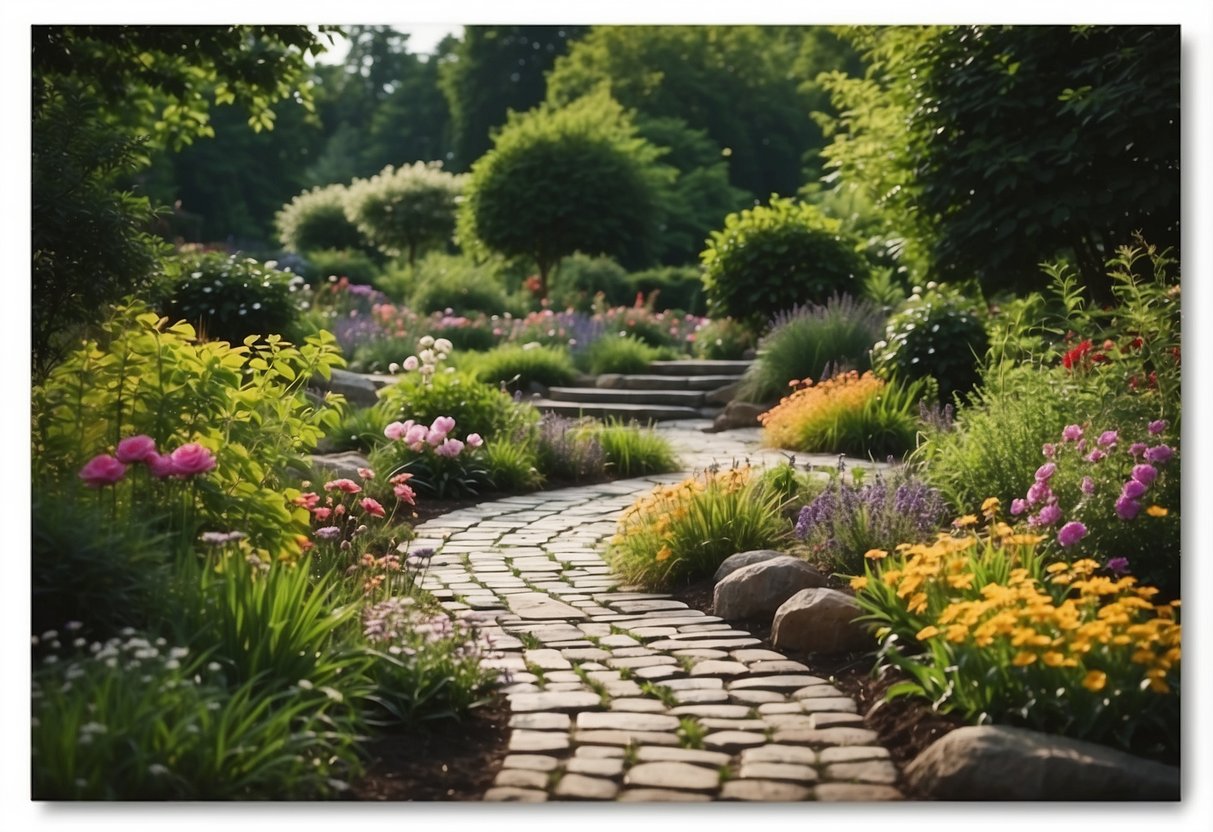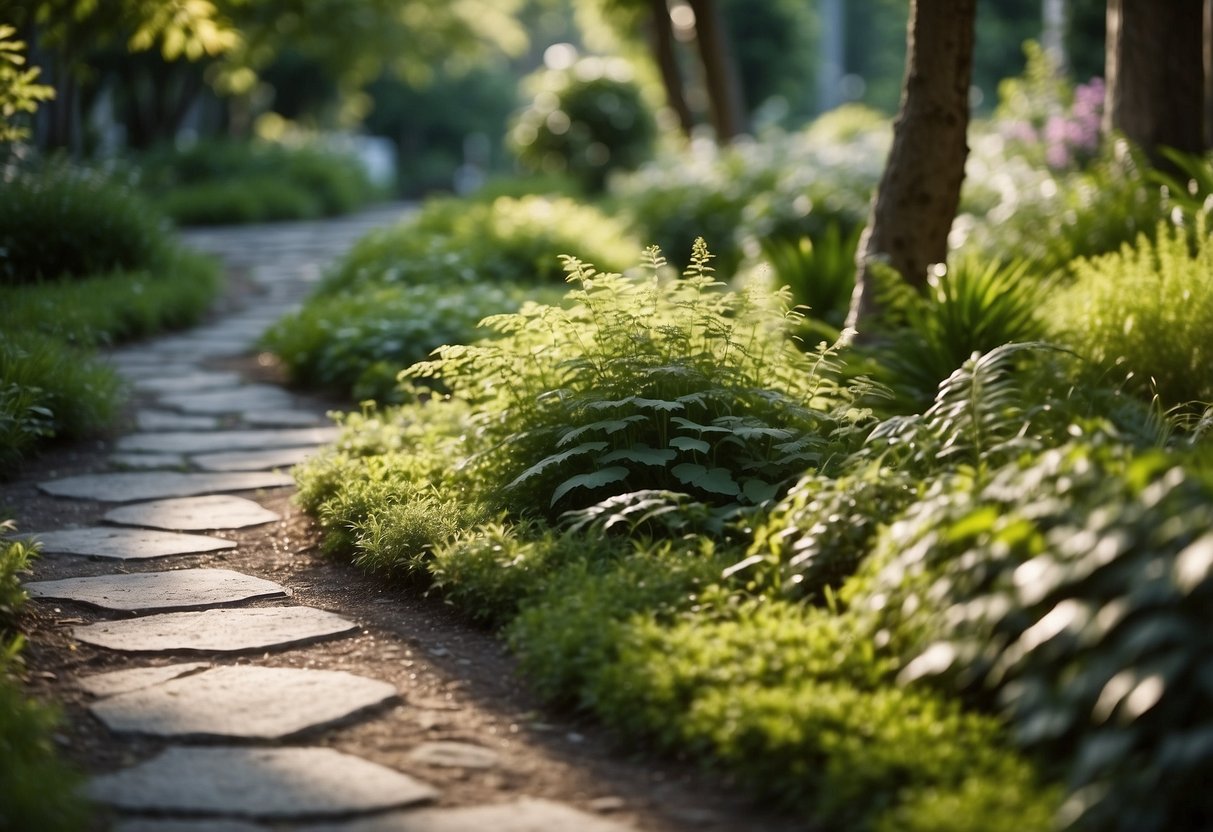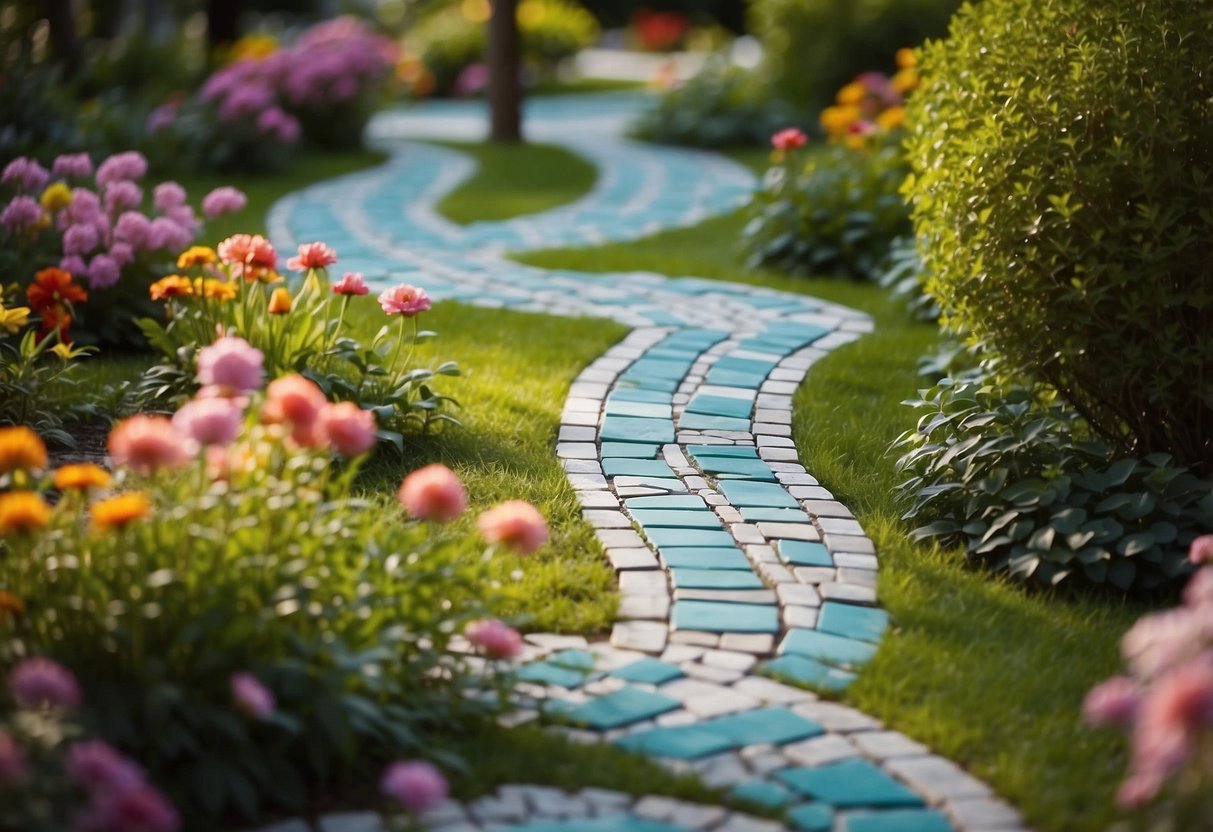Stepping Stone Garden Ideas: Creative Pathways for Your Yard
Transforming your garden with stepping stones can bring a new level of charm and functionality to your outdoor space. Whether you have a sprawling backyard or a compact garden, adding a pathway can make navigating through your garden both enjoyable and aesthetically pleasing. Stepping stones can also protect your plants by guiding foot traffic along designated routes.

One of the best parts about using stepping stones is the variety of designs you can choose from to reflect your personal style. From simple, rustic stones to intricate mosaics, there’s a design for every garden. Choosing the right type of stones and positioning them creatively will not only enhance the beauty of your garden but also make it more inviting for guests.
1) Natural Stone Pathways

Natural stone pathways are a beautiful addition to any garden. They offer a rustic and timeless look that blends well with the outdoor environment. You can use different types of stones like flagstone, bluestone, or slate to create unique designs.
Another great idea is to mix large flat stones with small pebbles or gravel. This will add texture and interest to your path. Natural stones are also durable, making them a practical choice for high-traffic areas.
For inspiration, check out these stone walkways.
2) Pebble Mosaic Steppers

Pebble mosaic steppers can add a unique touch to your garden paths. You can create these by arranging smooth pebbles in different patterns.
First, set the stepping stones in a mold and let them sit for 48 hours.
You may want to brush off any loose mortar and rinse the stones. For a clean finish, remove any remaining mortar with muriatic acid.
When placing them in your garden, think about combining with other stones or greenery for a natural look. It can really make your paths stand out!
3) DIY Concrete Pavers

Making your own concrete pavers can be a fun and rewarding project. Start by mixing concrete following the instructions on the bag.
Pour the concrete into molds. Tap the molds gently to remove any air bubbles. Drag a piece of wood across the top to level it.
Let the concrete dry for at least 24 hours before removing it from the molds. With your DIY pavers ready, arrange them in your garden to create unique pathways. For more detailed instructions, you can visit How to Make Garden Stepping Stones.
Enjoy your beautiful, custom-made garden path!
4) Repurposed Brick Walkways

Repurposing old bricks for your garden is a great idea. You can create charming walkways using bricks you already have. This not only saves money but also gives your garden a unique look.
You can arrange your bricks in various patterns. Try a herringbone or basket weave design to add flair. These patterns are not only attractive but also sturdy.
Bricks are durable and can withstand heavy foot traffic. This makes them perfect for garden walkways. They also have a timeless appeal and blend well with any garden style.
For more creative ideas, check out these ways to reuse old bricks.
5) Round River Stones

Round river stones are a great choice for a natural and relaxed garden path. They come in various sizes, which makes it easy to create an interesting look.
You can mix and match different stone sizes to create a pathway that looks like it’s part of the landscape. These stones are smooth and comfortable to walk on.
For added safety, you may want to set the stones in sand or gravel to keep them stable. This helps prevent them from shifting and avoids tripping hazards. Using round river stones can enhance the beauty of your garden while making it more functional.
To explore more about this design idea, you can check out these tips.
6) Flagstone Steps

Flagstone steps can bring a charming, rustic look to your garden. They work well on slopes or as part of an existing pathway.
When placing flagstones, use different shapes and sizes for a natural feel. To make them stable, secure each stone into the ground properly.
Consider adding plants or moss between the steps. This softens the hard look of the stones and blends them into the garden better. If you need inspiration, there are excellent flagstone walkway ideas available online.
7) Imprinted Concrete Slabs

Imprinted concrete slabs can add elegance to your garden walkways.
You start by mixing concrete and pouring it into molds. Before it dries, press leaves or other textured items into the surface.
This technique is easy and makes beautiful paths, reflecting nature’s patterns. It’s a simple way to personalize your garden. For more ideas, check out these leaf imprint stepping stones.
8) Colorful Ceramic Tiles

Adding colorful ceramic tiles to your stepping stones can make your garden pop with personality and brightness. These tiles come in many shapes, sizes, and colors, allowing you to create unique patterns and designs.
Arrange them in geometric shapes or vibrant mosaics to make each step a piece of art. This approach not only enhances beauty but also adds a playful element to your garden paths. For inspiration, you can explore some creative designs at Better Homes & Gardens.
9) Reclaimed Wood Stepping Stones

Reclaimed wood stepping stones add a rustic charm to your garden. They are eco-friendly and bring a natural aesthetic to your outdoor space.
You can find reclaimed wood from old barns, pallets, or even old furniture. Just make sure the wood is treated to withstand outdoor conditions.
These wooden stepping stones can be arranged in creative patterns. Combine them with other natural elements like stone or gravel for a unique look.
10) Glow-in-the-Dark Pavers

Glow-in-the-dark pavers add a magical touch to your garden paths. They charge during the day and emit a soft glow at night. These pavers are both practical and decorative.
Installing them is simple. Dig a hole that’s slightly larger than the paver, place it, and fill the gaps with soil or gravel. Ensure they are level and stable.
For the best glow, place the pavers away from other light sources. This way, the glow will be more noticeable and impressive. Reapply glow-in-the-dark paint every few years to keep them shining bright.
Types of Stepping Stones

Transforming your garden with stepping stones can add beauty, functionality, and charm. There are various types of stepping stones to consider, each with unique benefits and styles.
Natural Stone Stepping Stones
Natural stone stepping stones are classic and elegant. They come in various types such as granite, sandstone, and slate.
Granite is durable and withstands weather changes. Sandstone offers a rustic look and is softer underfoot. Slate has a smooth surface and comes in various colors.
Natural stones are often irregular in shape. You can arrange them to create unique pathways. Maintenance is minimal, usually just occasional washing.
These stones blend well with garden plants and can be used to complement other garden features like ponds or statues.
Concrete Stepping Stones
Concrete stepping stones are versatile and affordable. They can be molded into various shapes and sizes, from circles to hexagons.
You can even find or create concrete stones with decorative designs. Adding color to your concrete mix allows for customized looks that match your garden theme.
Durability is a key feature; they can withstand heavy foot traffic and weather conditions. Maintenance involves occasional cleaning and checking for cracks.
These stones can mimic the appearance of natural stones while being more budget-friendly. They are perfect for those looking for a durable and stylish option.
Brick Stepping Stones
Brick stepping stones give a classic and timeless look to your garden. They’re excellent for creating orderly paths thanks to their uniform shape and size.
Bricks can be laid in different patterns such as herringbone or basket weave to add visual interest. They are slip-resistant, making them safe for walking even when wet.
While bricks are durable, they may require some maintenance like resetting any that have shifted and regular cleaning to prevent moss.
Using bricks can also tie in other brick elements in your garden, such as walls or patios, for a cohesive look. They are a great choice for traditional or cottage gardens.
Design Tips for Stepping Stone Gardens

When designing a stepping stone garden, focus on selecting the right placement for the stones and ensuring proper spacing and alignment. This will create a visually appealing and functional pathway.
Choosing the Right Placement
Placement is essential in creating a stepping stone path that looks natural and inviting. Begin by observing the flow of your garden. Look for existing walkways, natural curves, and high-traffic areas where a path would be most practical.
Considerations for Placement:
- Natural Flow: Align with the natural layout of your garden.
- Functionality: Make sure the path leads to frequently visited areas like the garden shed or seating areas.
- Avoid Obstacles: Steer clear of large roots, existing plants, or uneven terrain that could disrupt the path’s smoothness.
Types of Placement:
- Straight Paths: Direct routes work well for utilitarian spaces.
- Meandering Paths: Gentle curves and winding layouts add a sense of adventure and exploration, ideal for relaxing gardens.
Spacing and Alignment
Proper spacing and alignment are crucial for both safety and aesthetics. Stepping stones should be spaced comfortably for an average step to ensure easy navigation. The alignment should complement the garden’s design, whether it’s straight or curved.
Spacing Tips:
- Average Step Length: Space stones about 20-24 inches apart for a natural stride.
- Consistency: Keep spacing uniform to maintain a smooth walking experience.
Alignment Ideas:
- Linear: A formal, aligned path looks clean and organized.
- Irregular: A varied, irregular alignment gives a whimsical and organic feel.
Additional Tips:
- Test Walk: Before finalizing, lay out the stones and take a test walk to adjust spacing.
- Complementary Materials: Use gravel, mulch, or grass around stones to enhance the look and feel of your path.
By carefully selecting placement and spacing, your stepping stone garden will be both beautiful and functional.
Maintenance and Upkeep

Keeping your stepping stones in good condition requires regular cleaning and occasional repairs. This will ensure they remain both beautiful and functional for years to come.
Cleaning Tips
Regular cleaning is essential to maintain the appearance of your stepping stones. Begin by sweeping off dirt and debris with a broom.
For deeper cleaning, use a garden hose to rinse the stones. For stubborn stains, mix a solution of water and mild detergent. Scrub the stones with a brush.
If your stones have moss or algae growth, this can be removed with a mixture of water and vinegar. Apply it to the affected areas and scrub after letting it sit for a few minutes.
Avoid using harsh chemicals, as they can damage the stone and surrounding plants.
Tip: Clean your stones at least once every season to keep them looking their best.
Repair and Replacement
Over time, stepping stones may crack or shift out of place. Inspect them regularly to catch any problems early.
If you find a damaged stone, it should be replaced. Carefully lift the broken stone and clear any debris from the site. Place the new stone into position and press firmly into place.
For stones that have shifted, adjust them back into position and refill gaps with sand or soil to ensure they stay stable.
Securing your stones with a strong base like gravel can prevent future shifting.
Note: Always wear gloves to protect your hands while handling heavy stones.







